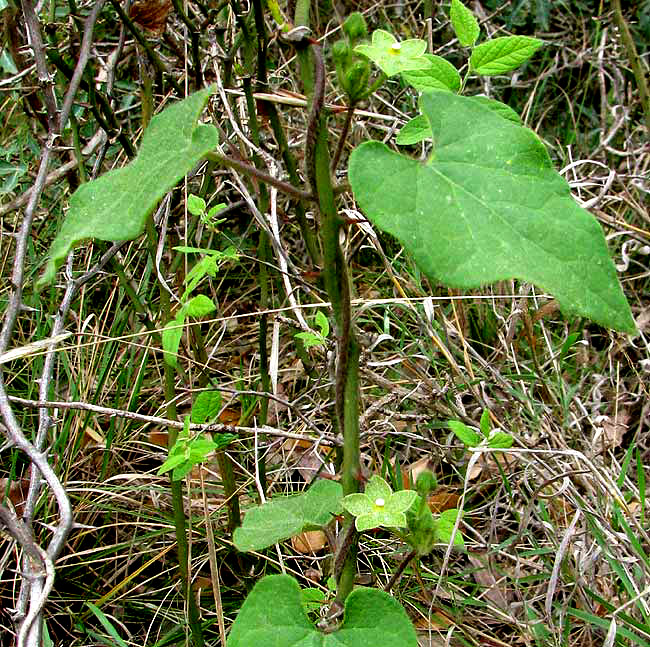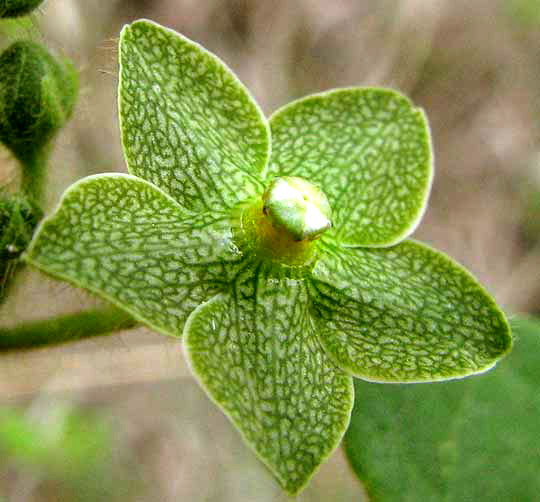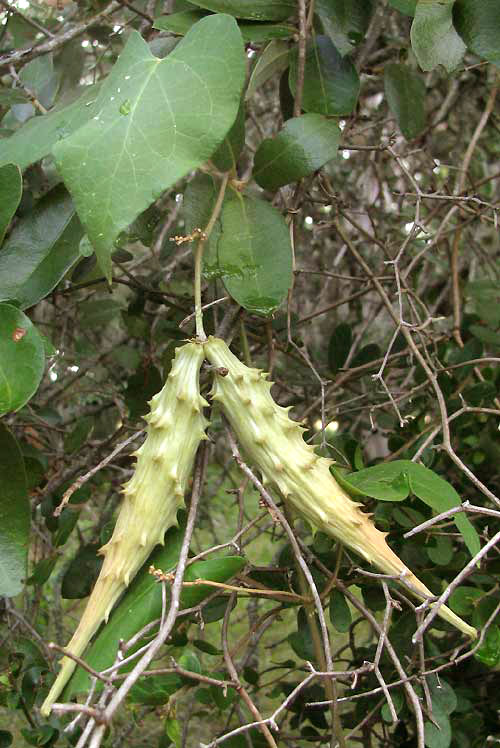Excerpts from Jim Conrad's
Naturalist Newsletter

from the the April 21, 2013 Newsletter issued from the Frio Canyon Nature Education Center in northern Uvalde County, southwestern Texas, on the southern border of the Edwards Plateau; elevation ~1750m (~5750 ft); N29.62°, W99.86°; USA
GREEN MILKWEED VINE
Especially along trails and at woods edges you see slender, herbaceous vines with heart-shaped leaves arising from stems in pairs, and bearing unusual green, star-shaped, fingernail-sized flowers, as shown above. Up close, the little flower reveals arabesque patterns on its petals, seen below:

The shiny dome in the flower's center is the gynostegium, composed of fused parts of the stamens and pistil. Gynostegia are highly evolved features typical of the former Milkweed Family, the Asclepiadaceae, which lately has been merged into the Dogbane Family, the Apocynaceae.
So, one common name for this handsome, delicate little vine is Green Milkweed Vine, though it's also known as the Netted Milkvine, Pearl Milkweed Vine, Net-vein Milkvine, and other names. It's MATELEA RETICULATA, endemic to west, central and southern Texas, and arid northeastern Mexico.
from the August 18, 2013 Newsletter issued from the Frio Canyon Nature Education Center in northern Uvalde County, southwestern Texas, on the southern border of the Edwards Plateau; elevation ~1750m (~5750 ft); N29.62°, W99.86°; USA
GREEN MILKWEED VINE PODS
Nowadays Green Milkweed Vines are producing an unusual-looking, pod-type fruit, shown below:

The spines are so soft that they don't scratch or prick at all. When the pods open, dark, flat seeds bearing feathery, white "parachutes" are released into the wind, just as happens with regular milkweeds along roads and in fields.